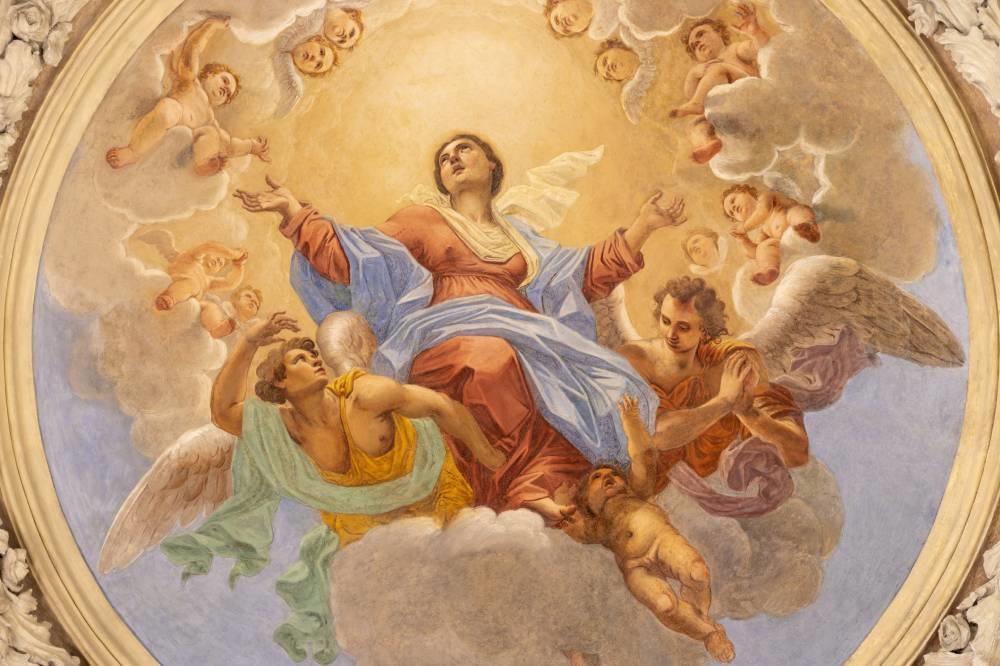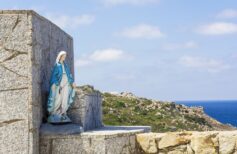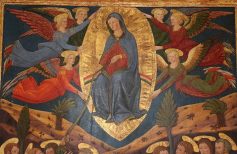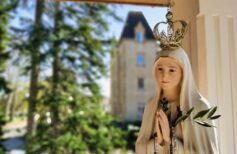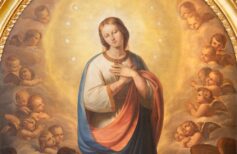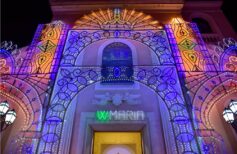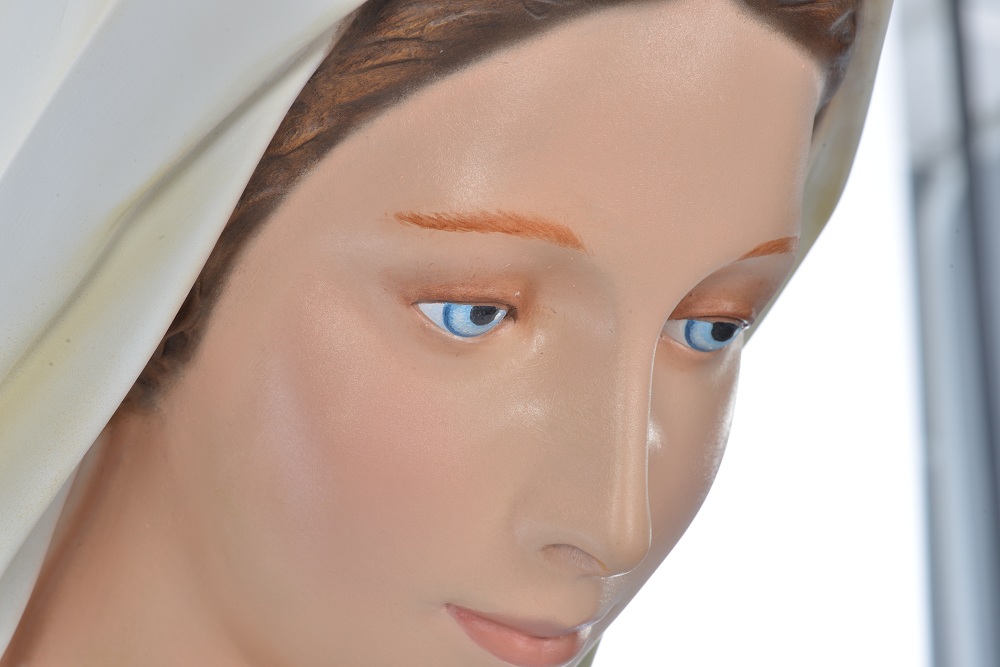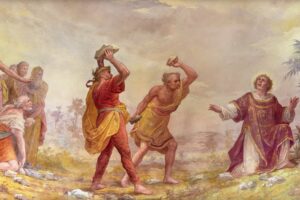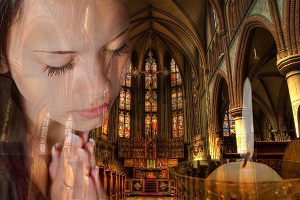15 August is not just an occasion for partying and outings. We remember the Assumption of Mary into heaven. Let’s discover the most evocative celebrations that this anniversary is celebrated with.
In an article of some time ago we had already spoken extensively about the Assumption of Mary into heaven, about how it is not the only dogma of faith but before this a belief very rooted and widespread in our country, to the point of having inspired over the centuries countless forms of popular devotion.

Ferragosto, the feast of the Madonna
In addition to representing the heart of summer, Christians consider Ferragosto to be the feast of the Madonna.
The reasons for the emotion aroused by the Assumption of Mary Most Holy are easily understood if we think of how Mary has imposed herself since ancient times as a receptacle of the dedication, affection and prayers of men and women of every background and social class.
It is probably her dimension as a merciful Mother, which she guarantees for men by interceding for them with God the Father Almighty, that deserves so much sympathy and solicitude.
But how is Mary assumed into heaven? Why?
All the souls of the saints have ascended to Paradise, according to the Christian religion, often escorted by hosts of angels. Countless artistic representations show this event.
But for the Virgin Mary, it was something completely different. She has ascended to Heaven not only as a soul but also with her own body.
Just as it happened for Jesus, his son, who with the Ascension reached his Heavenly Father with his own body and spirit, so too Mary assumed the privilege, unique among women and men, of ascending to Heaven without leaving her mortal remains. And this is how this sweetest Mother awaits us in the Kingdom of Heaven, with her soul and body extended to her children, to embrace, console and envelop them as only a mother knows how to do.
The reasons for the Assumption of the Virgin Mary in body and soul are easy to understand. Not only was she the mother of God incarnate, chosen among all women to carry the Savior in her womb and heart. But long before the Annunciation, God had already chosen her and predestined her to his destiny, making her born without sin, according to the dogma of the Immaculate Conception, and later making sure that she conceived Jesus remaining a virgin, as the dogma of Mary’s perpetual virginity reminds us.
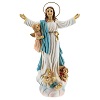
The Assumption is a prize that God wanted to grant to Mary for her sacrifice and devotion. But it is also a promise of salvation for all men since Mary was the first to enjoy the resurrection of the flesh, promised to all men when the end of time comes.
But now we see together the main traditions and celebrations related to the commemoration of the Assumption of Mary.
Feasts and celebrations for the Assumption of Mary
The Assumption of Mary is a feast of precept, or a day when the faithful are required to suspend all usual activities, work and business, and to attend Mass.
In Italy, a land of magnificent patron saint festivals, whose traditions have been handed down for centuries, many celebrations are dedicated to Our Lady of the Assumption.
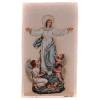
The Tivoli Bowing Procession
Every year in Tivoli, between the evening of 14 August and the following day, the Procession of the Bowing takes place, in honour of the Assumption of the Virgin Mary. It is a very ancient festival, already celebrated in the High Middle Ages, and which refers to the pagan processions during which the Romans carried around the city the images of their gods (theophoria). The Procession of the Bowing probably dates back to the thirteenth century and is linked to the presence in the city of a community of Franciscans who lived near Santa Maria Maggiore and who on 14 and 15 August paid homage to the icon of the Blessed Madonna delle Grazie kept here.
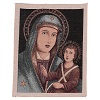
On the occasion of the Procession of the Bowing, the image of Saint Salvatore preserved in the Cathedral is carried in procession through the streets of the city. Arriving at the Gregorian Bridge, a priest blesses the river Aniene and throws into its waters a light that represents faith in God.
Another stage involves the prior of the Brotherhood of the Saviour stopping to kiss the threshold of the hospital. When the image of the Saviour reaches Piazza Trento it joins that of the Madonna delle Grazie.
Both images are brought with solemnity inside the church of Santa Maria Maggiore and placed in front of each other so that they can ‘talk’ to each other throughout the night.
The next morning, the day of the Assumption, the two images are brought out again and separated. The Saviour is brought back to the Cathedral with a new procession where all the town Brotherhoods and representatives of the Arts and crafts take part.
The Vara of Randazzo
In Randazzo, a small town in the province of Syracuse, the celebrations for the Assumption of Mary begin at midnight on August 15, when the Procession of the Vara (Rod) begins. The Vara is an ancient and large votive allegorical chariot dating back to the sixteenth century. It is about 15 metres high, composed of several superimposed planes that rotate around a central axis.
Each floor corresponds to a Marian mystery, that is, to the death, Assumption and coronation of Mary, represented on a panel made in 1548 by Giovanni Caniglia and kept in the Chapel of the Most Holy Crucified in the church of Santa Maria.
About thirty children are brought up on the Vara, symbolising the different mysteries, and sing hymns dedicated to the Virgin, while the faithful carry the great chariot in procession through the city. The Procession of the Vara was born in the sixteenth century when King John of Aragon introduced the Fair Franca, which was held for nine days on 15 August and also included a large palio.
Also in Messina, a 13 m high Vara is carried through the streets of the city by 1,500 barefoot men dressed in white.
Festivities for the Assumption of Mary in Sardinia
In Siniscola, Sardinia, the Procession for the Assumption of Mary takes place on the sea. While all the parishes celebrate Maria Assunta, the statue of the Madonna is taken from the main church to the beach called La Caletta and loaded on a boat that is at the helm of a maritime procession. To the procession at sea is added one through the streets of the town. A statue of the Virgin is carried around and then placed in a majestic wooden structure, where it is honoured by the faithful with flowers and offerings.
The celebrations for Maria Santissima Assunta are celebrated in Sassari on 14 August. This festival was declared an Intangible Heritage of Humanity by UNESCO in 2013 and responds to the evocative name of Faradda di li candareri or Faradda, Descent of the candlesticks.
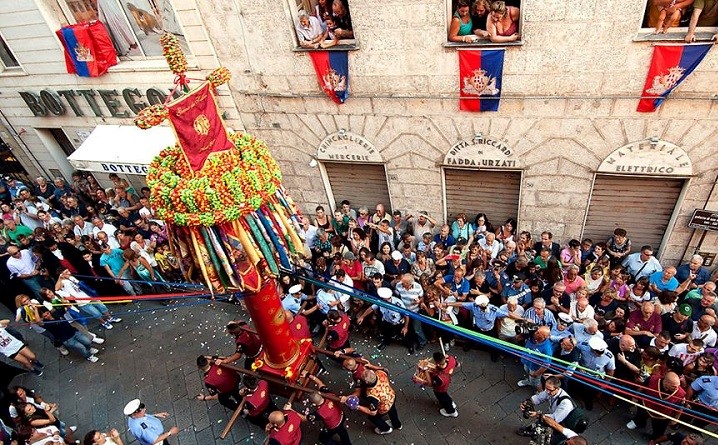
On the evening of August 14, representatives of the various professions carried candlesticks on their shoulders around the city or large wooden columns that symbolise candlesticks. The festival attracts thousands of people from all over the world and is one of the most important of the large shoulder machines.
The movement of the conveyors spins the candles, as in a dance, also involving all the other participants in the procession, who grasp the long ribbons hanging from the structures.
The Procession of Sora
Also in Sora, in Lazio, there are about sixty Carriers, who wear a blue and white uniform and walk through the city carrying a metal column about 16 metres high, at the top of which is placed the statue of the Virgin. The base of the structure is adorned with blessed blue roses for the occasion.
In the church of San Domenico Abate, there are various rituals, including an evening procession of the statue of the Sleeping Virgin, lying on a porter. The celebrations continue until the feast of San Domenico (21 and 22 August).
Maritime procession to Santa Maria di Leuca
In Santa Maria di Leuca, in the province of Lecce, a solemn procession takes place on 15 August through the city streets. The statue of Maria Assunta is carried in a procession to the port, where it is embarked on parity of fishermen, drawn by lot and decorated for the occasion. The procession continues at sea with all fishing vessels and boats of all kinds.
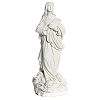
Once you reach the marina of San Gregorio, you return to Leuca to reposition the statue in its place. It is celebrated late in the evening, and at midnight the sky is brightened by the glow of fireworks.
Our Lady of the Sea and fires of August
Also in Silvi, in the province of Teramo, the Assumption is celebrated with a procession of boats on the sea. Our Lady of the Sea is taken from the church of the Assumption, loaded on a Coast Guard patrol boat and then on a fishing boat. The procession of boats winds along the coast from the Cerrano Tower to the mouth of the Piomba River. At midnight the fireworks over the sea attract thousands of people.
In the province of Livorno, in Marina di Cecina, the statue of the Madonna and Child, kept in the Church of Sant’Andrea in Marina di Cecina, is taken to the sea in the presence of the Bishop of Volterra with a procession from the ground that then becomes a procession on the sea.

